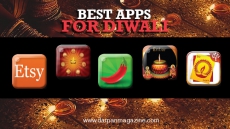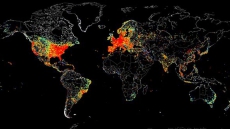TORONTO - Google's Gmail has been given a new mobile-friendly look, and if users really like it, it could permanently replace the familiar, old-fashioned interface.
Ten years after the birth of Gmail, Google is looking to reinvent the popular email service with an alternate experience called Inbox.
Gmail users aren't being forced into using the new design and instead can opt-in for the new interface.
It's available in Apple's App Store and the Google Play marketplace and on the web at http://www.google.com/inbox, although it only works with Google's Chrome browser. Inbox is currently operating in invite-only mode but early adopters can request access to it by sending a message to inbox@google.com.
Google's office in Kitchener, Ont., is a hub of Gmail development and product manager Matthew Izatt says all the work for the Apple iOS Inbox app was done in Canada.
The first iPhone was still three years away when Gmail was launched in 2004. The current redesign — which took years to complete — was largely focused on how to improve the mobile experience, says Izatt.
"It's the first thing most people check in the morning, they pick up their mobile device and see what's there. So it was an extremely important priority for us to make sure that the best experience you could have would be on a mobile device," he says.
"And to make sure that anything you might possibly want to do with your Inbox is something you could do from a phone."
The Inbox apps and website are designed to help users better triage their emails, with some automated help from Google's engineering team.
Last summer, Gmail started organizing emails into separate subject tabs within users' inboxes (such as Primary, Social and Promotions) and more work has been done to better group similar messages together. Users can quickly dispense with a group of emails that don't need reading with a checkmark icon, which moves those messages to a Done folder.
If users don't have time to respond to an important message, they can hit a Snooze icon to set up a reminder to reply to it later. Users can also create a location-based reminder, so they'll get an alert when their device senses they're in a particular place, like a grocery store, for example.
When users are scanning through email previews they'll also see the most important part of the messages highlighted, rather than just seeing the typical sender, subject line and the first few words of emails. Inbox highlights photos, attachments and links to important content buried within the messages.
The introduction of Inbox doesn't necessarily mean Gmail will be phased out, Izatt says. But it could be if Gmail users decide they prefer Inbox.
"I think we want our users to really give us the answer to that. Inbox is designed to be a complete rethink of how email works. We still love Gmail, we have hundreds of millions of users and we're going to continue to innovate on it and it will certainly continue to go forward," he says.
"I think we'll really find out from our users as to what the right path is going forward."




